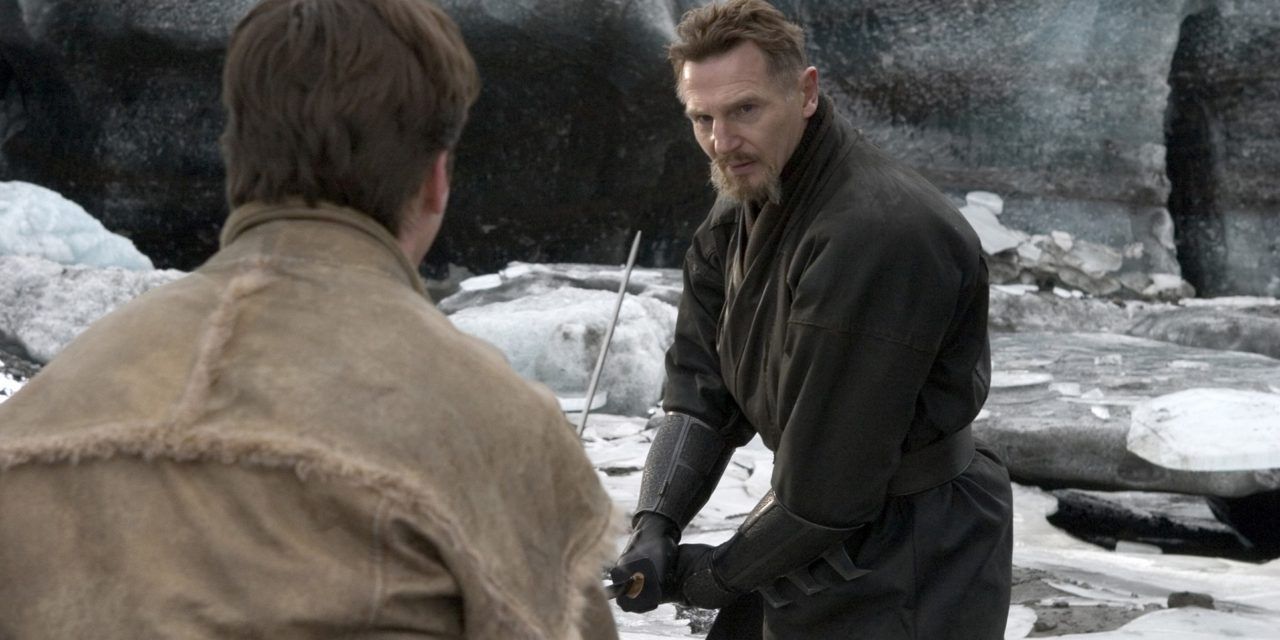One of the longest-held fan theories about Batman Begins has been debunked 15 years after the film's release, and it relates to Ra's al Ghul's destiny. The theory is that the reason Ra's closes his eyes and serenely accepts his fate as the train he's on crashes at the end of the film is because he knows he can be resurrected in a Lazarus Pit.
However, Batman Begins co-writer David S. Goyer confirmed there was no theatricality, or deception, behind Ra's al Ghul's death in an interview with Backstory Magazine for its Comic-Con@Home panel. The theory never held much water to begin with, but it can now officially be put to rest: When the train crashed, Ra's did in fact die.
"I think you're reading too far into it," Goyer responded when asked about the theory. "Certainly there was never any discussion that Chris or I had about that, but if you think about it, it was a fairly realistic approach. I think if you introduce something like the Lazarus Pit into that -- I’m not saying you couldn’t tell a cool story with the Lazarus Pit; I think you could, I just don’t think that the Lazarus Pit would’ve gelled with that approach.”
Goyer said he feels the Lazarus Pit's comic-book surrealism conflicts with the more grounded, realistic approach Christopher Nolan opted for with his Batman reboot. While the fan theory is certainly interesting, it would fly in the face of all of the events that preceded it in the film. Instead, Nolan's vision of immortality in his Dark Knight trilogy is more metaphorical than literal.
Batman Begins briefly flirts with the idea of immortality before revealing that the Ra's who died earlier in the film was really a decoy and that the character known as Ducard was actually Ra's all along. Ducard challenges Bruce, "But is Ra's al Ghul immortal? Are his methods supernatural?" Instead this "immortality" is actually a cheap parlor trick. There is nothing supernatural in this universe and Ra's is mortal like any other man.
This perspective fits into the trilogy's larger theme of becoming something greater than a man -- an idea. Just like Batman, Ra's became a symbol and his legacy endured through his daughter, Talia, and Bane in The Dark Knight Rises. Therefore, Nolan's Ra's al Ghul is spiritually immortal as opposed to physically immortal, as his The Dark Knight Rises cameo proves. In a vision to Bruce he says, "There are many forms of immortality," as the League of Shadows' work continues without him. This is a more nuanced version of the character's story that parallels Bruce's journey to becoming a lasting symbol of justice even after his body is broken.
The prison in The Dark Knight Rises is Nolan's take on the Lazarus Pit. Bruce Wayne enters The Pit a broken man and exits spiritually reborn with a rekindled purpose. The aptly named Pit does not literally grant eternal life, but escaping it effectively restores Batman's soul.
In fact, Goyer feels that prior failed attempts at rebooting the Caped Crusader actually paved the way for Nolan to take the franchise in a new direction.
Nolan and Goyer had the idea, "What if we just tell the story as if it were a real story and it didn’t take place with a kind of fictional, comic-book world?” This was a big departure for the character following Tim Burton's heightened, expressionist take and Joel Schumacher's zany homage to the Adam West series, and it would prove incredibly influential. Featuring just one supernatural element like Ra's returning from the dead would have broken the rules and the sense of immersion that Nolan created for his universe.
(via Collider)


